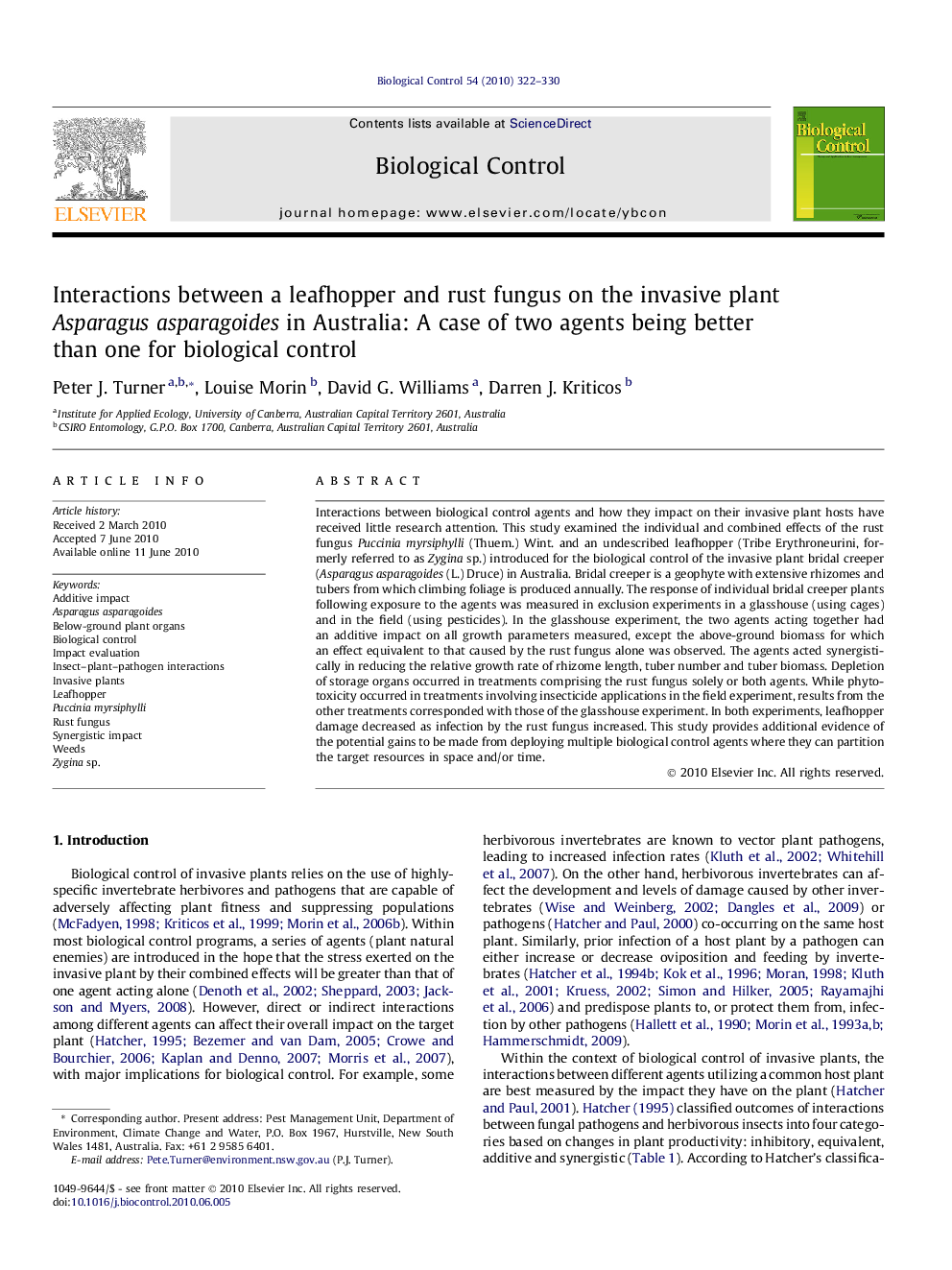| Article ID | Journal | Published Year | Pages | File Type |
|---|---|---|---|---|
| 4504323 | Biological Control | 2010 | 9 Pages |
Abstract
Interactions between biological control agents and how they impact on their invasive plant hosts have received little research attention. This study examined the individual and combined effects of the rust fungus Puccinia myrsiphylli (Thuem.) Wint. and an undescribed leafhopper (Tribe Erythroneurini, formerly referred to as Zygina sp.) introduced for the biological control of the invasive plant bridal creeper (Asparagus asparagoides (L.) Druce) in Australia. Bridal creeper is a geophyte with extensive rhizomes and tubers from which climbing foliage is produced annually. The response of individual bridal creeper plants following exposure to the agents was measured in exclusion experiments in a glasshouse (using cages) and in the field (using pesticides). In the glasshouse experiment, the two agents acting together had an additive impact on all growth parameters measured, except the above-ground biomass for which an effect equivalent to that caused by the rust fungus alone was observed. The agents acted synergistically in reducing the relative growth rate of rhizome length, tuber number and tuber biomass. Depletion of storage organs occurred in treatments comprising the rust fungus solely or both agents. While phytotoxicity occurred in treatments involving insecticide applications in the field experiment, results from the other treatments corresponded with those of the glasshouse experiment. In both experiments, leafhopper damage decreased as infection by the rust fungus increased. This study provides additional evidence of the potential gains to be made from deploying multiple biological control agents where they can partition the target resources in space and/or time.
Related Topics
Life Sciences
Agricultural and Biological Sciences
Agronomy and Crop Science
Authors
Peter J. Turner, Louise Morin, David G. Williams, Darren J. Kriticos,
